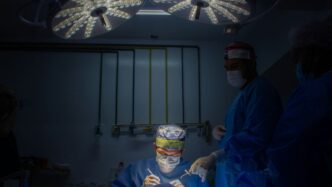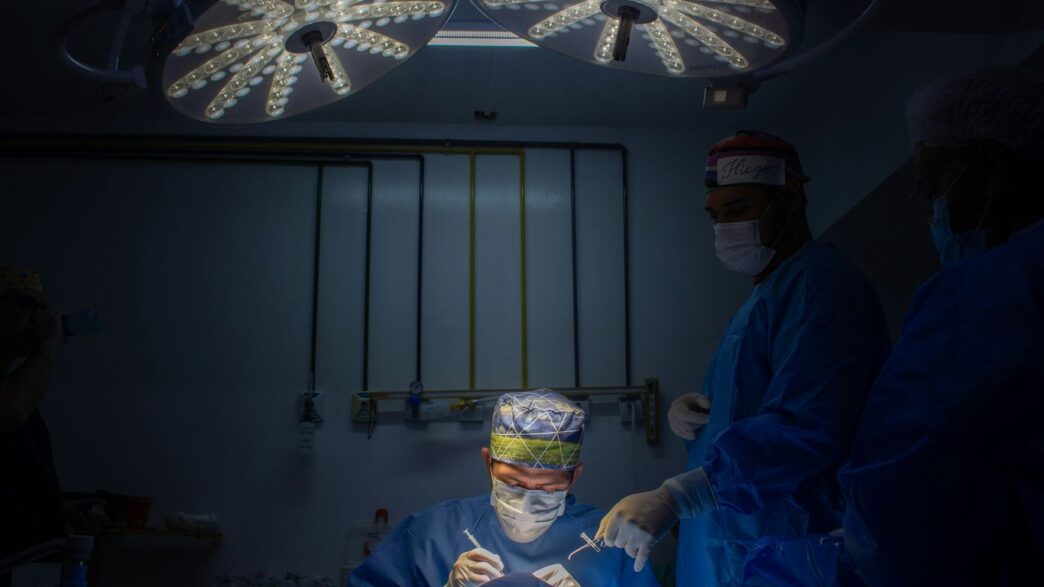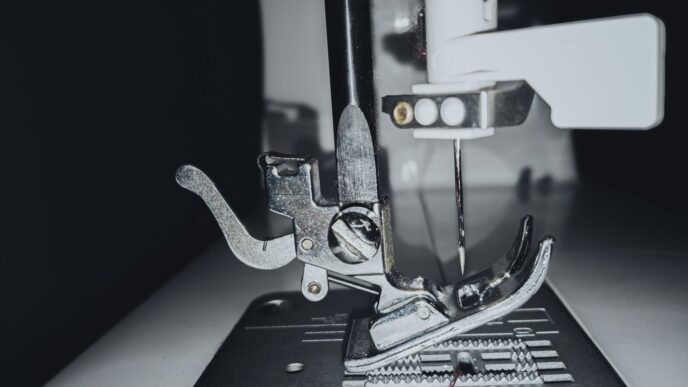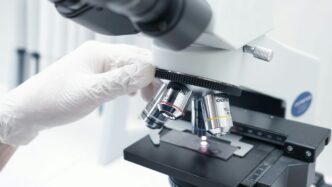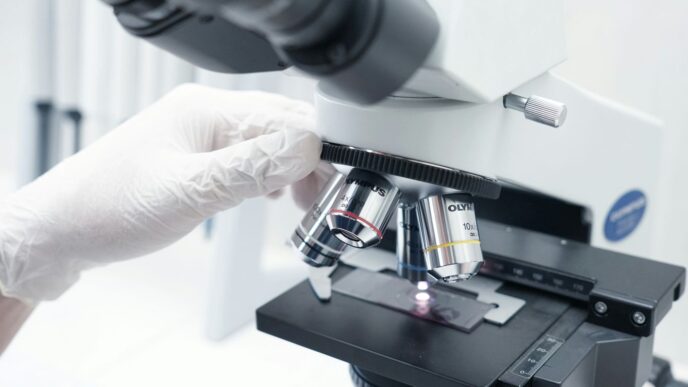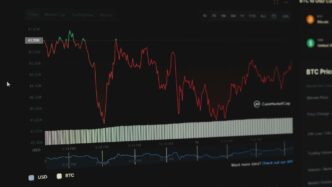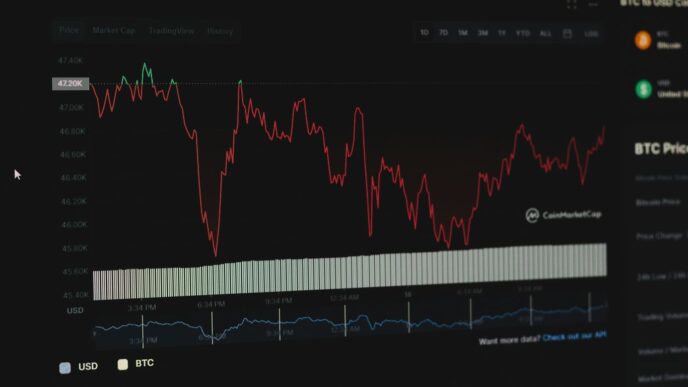It feels like every day there’s some new tech promising to change how we do things, and digital twins in healthcare are no different. Basically, imagine having a super-detailed digital copy of yourself, constantly updated with all your health info. This isn’t just science fiction anymore; it’s becoming a real thing that could totally change how doctors treat us, especially when it comes to personalized medicine. We’re talking about getting ahead of diseases, finding the best treatments just for you, and even making remote check-ups way more effective. It’s a big shift, and while it sounds amazing, there are definitely some things we need to think about, like keeping all that private data safe. Let’s break down what this means for the future of our health.
Key Takeaways
- Digital twins offer a complete picture of a patient’s health by combining genetic, lifestyle, and real-time data.
- They can predict how diseases might progress and how a person might respond to different treatments.
- This technology can speed up drug development and make clinical trials more efficient.
- Digital twins support better remote patient monitoring and telemedicine services.
- Important ethical questions about data privacy, consent, and fairness need careful consideration.
Understanding Patient Health Through Digital Twins
Think of a digital twin as a super-detailed, virtual copy of you, built from all sorts of health information. It’s not just about your basic stats; it’s about creating a complete picture. This virtual model pulls together data from your electronic health records, information from your smartwatch, your genetic makeup, and even what you tell your doctor about your daily life. By combining all these pieces, we get a much clearer view of what’s really going on with your health.
Holistic Patient View
Instead of looking at health data in separate boxes – like your blood pressure here, your diet there – a digital twin brings it all together. It’s like having a single dashboard for your entire well-being. This means doctors can spot connections they might have missed before. For example, a slight change in your sleep patterns, when combined with your activity levels and genetic predispositions, might signal an early risk for something down the line. This integrated approach helps create a more complete and accurate understanding of each individual.
Physiological and Genetic Insights
Your body is a complex system, and a digital twin can help us understand its intricate workings. It can model how your organs are functioning, how your body processes medications, and how your genes might influence your health risks. This goes beyond just knowing you have a certain gene; it’s about understanding how that gene might interact with your lifestyle and environment to affect your health. This level of detail allows for a truly personalized approach to care, moving away from one-size-fits-all solutions. It’s a big step towards understanding the unique biological blueprint of each person.
Lifestyle Pattern Analysis
What you do every day matters. A digital twin can track and analyze your daily routines, activity levels, sleep habits, and even your diet. By looking at these patterns over time, it can identify habits that might be beneficial or detrimental to your health. For instance, it could show how a consistent exercise routine impacts your heart rate variability or how certain foods affect your energy levels. This data can then be used to provide tailored advice, helping you make small changes that can lead to significant health improvements. It’s about making your everyday choices work for your health, not against it. This kind of detailed analysis is a key part of building a comprehensive digital health profile.
Predictive Modeling and Risk Assessment
So, how do these digital twins actually help us figure out what might happen with someone’s health? It’s all about looking at the data and making smart guesses. Think of it like having a super-detailed weather forecast, but for your body.
Simulating Disease Progression
One of the coolest things digital twins can do is show us how a disease might play out over time. We can feed in all sorts of info – like genetic predispositions, lifestyle habits, and current health markers – and the twin can run simulations. It’s not just a simple guess; it uses complex math, like differential equations, to model how things change. For example, for something like diabetes, we can use what’s called a Markov model. This model looks at different health states – say, ‘healthy,’ ‘pre-diabetic,’ or ‘diabetic’ – and figures out the chances of moving from one state to another over time. It’s like watching a movie of your potential health future, which can be pretty eye-opening.
Forecasting Treatment Responses
When it comes to treatments, a digital twin can be a game-changer. Instead of just trying a medication and seeing what happens, we can test it virtually first. The twin can predict how a specific drug, at a certain dose, might affect a patient’s unique system. This is where AI really shines. It can look at past treatment data from lots of people and learn what works best for different profiles. This means doctors can get a much better idea of whether a treatment will be effective or if there might be side effects, all before the patient even takes the first pill. This virtual testing can save a lot of time, money, and, most importantly, patient discomfort.
Quantifying Personalized Risk Factors
Figuring out someone’s risk for a particular health issue is a big deal. Digital twins can go beyond just saying ‘you have a high risk.’ They can break it down. By analyzing a patient’s specific data – things like blood pressure, cholesterol, age, and even how much pollution they’re exposed to – the twin can calculate a personalized risk score. This isn’t just a single number; it can be a dynamic score that changes as the patient’s health or environment changes. We can even use things like Bayesian networks to look at how genes and other biological factors interact, giving us a really detailed picture of what makes an individual susceptible to certain conditions. It’s about moving from general risk categories to very specific, individual risk profiles.
Revolutionizing Clinical Trials and Drug Development
Clinical trials and drug development are notoriously long, expensive, and often don’t pan out. We’re talking years, billions of dollars, and a high chance of failure. Think about it: getting a new drug from the lab to your medicine cabinet can take over a decade and cost upwards of $2.6 billion. And the success rate? Not great. Many promising treatments don’t even make it past the early stages, and even those that get to the final testing phase only have about a 50/50 shot of getting approved. Plus, finding enough people to join these trials is a huge hurdle. Many trials struggle to meet their enrollment targets, which causes delays and racks up massive costs for pharmaceutical companies. It’s a tough system.
Digital Patient Populations
This is where digital twins really start to shine. Instead of relying solely on real-world participants, we can create "digital patient populations." These are essentially virtual replicas of patient groups, built using existing data, genetic information, and even lifestyle factors. These digital twins can mimic how a real patient group would respond to a drug. This means researchers can test out drug candidates on these virtual populations before even starting a physical trial. It’s like having a massive, always-available test group that doesn’t require physical space or extensive logistics. This approach can help identify potential issues early on and refine the drug candidate, saving time and resources.
Optimizing Trial Design
Traditional clinical trials often have a one-size-fits-all approach to design. Digital twins allow for a much more personalized and efficient trial structure. We can simulate different trial scenarios using these digital populations to figure out the best way to structure a study. This includes:
- Determining the right dosage: Simulating how different doses affect the digital patient population can help pinpoint the most effective and safest dosage.
- Identifying ideal patient subgroups: Digital twins can help predict which types of patients are most likely to benefit from a particular drug, allowing for more targeted enrollment.
- Streamlining data collection: By understanding the expected outcomes, researchers can design more efficient data collection methods, reducing the burden on participants and the research team.
- Predicting trial timelines: Simulations can provide a more realistic estimate of how long a trial will take, helping with planning and resource allocation.
Accelerating New Treatments
Ultimately, the goal is to get effective treatments to patients faster. By using digital twins to create virtual patient populations and optimize trial designs, we can significantly speed up the entire process. This means fewer delays, reduced costs, and a higher likelihood of success. The ability to test and refine drugs in a virtual environment before committing to large-scale human trials is a game-changer. It allows researchers to be more agile, make better-informed decisions, and ultimately bring life-changing therapies to market much sooner than was previously possible. This isn’t just about saving money; it’s about saving lives by getting effective treatments into the hands of those who need them, when they need them.
Enhancing Remote Patient Monitoring and Telemedicine

This is where things get really interesting for everyday folks. Digital twins are changing how doctors keep tabs on us when we’re not in the hospital. Think about it: instead of just seeing your doctor every few months, imagine a virtual version of you that’s constantly being updated with your health info. This continuous stream of data allows for a much more proactive approach to health.
Continuous Health Parameter Tracking
So, how does this work? It’s all about data. Wearable devices, like smartwatches and fitness trackers, are already collecting a lot of information – heart rate, sleep patterns, activity levels. When these devices are linked to your digital twin, that data gets sent over securely. It’s not just about the numbers, though. The digital twin can analyze these inputs in real-time. It can spot subtle changes that might signal a problem before you even feel sick. For example, a consistent dip in oxygen saturation or an unusual heart rhythm could be flagged immediately. This means doctors can get a heads-up and reach out, potentially preventing a serious health event. It’s like having a vigilant health guardian working behind the scenes, all thanks to advanced applications.
Personalized Remote Interventions
Once a digital twin flags something, the next step is figuring out what to do about it. Because the digital twin has such a detailed picture of your health, any advice or intervention can be super specific to you. If your digital twin notices your blood sugar levels are trending upwards, it might suggest a personalized dietary adjustment or a specific type of exercise, rather than a generic recommendation. If you’re recovering from surgery, it could monitor your activity and alert your care team if you’re pushing yourself too hard, or not moving enough. This level of tailored guidance is a big step up from the one-size-fits-all advice we often get.
Empowering Patient Self-Management
This technology also puts more power in your hands. When you can see your own health data visualized and understand what it means through your digital twin, you’re more likely to take an active role in your well-being. You might get personalized reminders to take your medication or prompts to do a specific breathing exercise. It can also help you understand how your lifestyle choices directly impact your health metrics. This kind of feedback loop can be really motivating. Instead of just being told what to do, you can see the results of your actions, which can lead to better adherence to treatment plans and healthier habits overall. It makes managing chronic conditions, for instance, feel a lot less overwhelming.
Ethical Considerations in Digital Twins Healthcare

So, we’ve talked a lot about how cool digital twins are for medicine, right? They can predict stuff, help with trials, and keep an eye on us from afar. But, like with any powerful new tech, there are some tricky bits we need to think about. It’s not all smooth sailing.
Data Privacy and Consent
First off, there’s the whole data thing. To make a digital twin work, it needs a TON of personal health information. We’re talking genetics, lifestyle habits, past illnesses, you name it. Getting people to agree to share all that, and understanding exactly what they’re agreeing to, is a big hurdle. It’s not like signing up for a newsletter; this is your most private information. People need to know who’s got their data, how it’s being used, and if they can pull it back later. It’s a lot to ask someone to trust.
Potential for Discrimination
Then there’s the risk of these digital twins accidentally creating new kinds of unfairness. Imagine if the data used to build these twins mostly comes from one group of people. What happens when someone from a different background uses it? The twin might not be as accurate, or worse, it could lead to doctors making different recommendations based on someone’s race or economic status, even if they don’t mean to. We need to make sure these tools help everyone, not just a select few.
Navigating Regulatory Landscapes
And who’s in charge of all this? The rules and laws around digital twins in healthcare are still being figured out. It’s a whole new ballgame. We need clear guidelines on:
- How data is collected and stored securely.
- Who owns the digital twin and the data it generates.
- What happens if a digital twin makes a wrong prediction that harms a patient.
- Making sure there’s transparency so patients and doctors understand how the twin works.
It’s a complex puzzle, and getting it wrong could have serious consequences. We’ve got to be smart about this so the tech helps more than it hurts.
The Future of Digital Twins in Personalized Medicine
So, where are we headed with all this digital twin stuff in healthcare? It’s pretty exciting, honestly. We’re looking at a future where technology isn’t just a tool, but a partner in keeping us healthy. The big picture is making healthcare more predictive, responsive, and fair for everyone.
Advancements in AI and IoT Integration
Think about it: the more data we have, the smarter these digital twins get. Artificial intelligence is getting way better at spotting patterns we’d never see on our own. Plus, with more and more smart devices – from your smartwatch to sensors in your home – constantly feeding information, these twins will have a real-time, super-detailed view of your health. This means:
- Smarter predictions: AI can analyze your digital twin’s data to flag potential health issues long before you feel anything.
- More accurate simulations: We’ll be able to test treatments virtually on your twin to see what works best with fewer side effects.
- Personalized alerts: Your twin could tell you when to adjust your diet or activity based on your current health status.
This integration is key to moving beyond just treating sickness to actively promoting wellness. It’s about having a constant, intelligent health companion. The ongoing development of digital twin technology is central to this evolution.
Population-Level Health Initiatives
It’s not just about individuals, though. Imagine using aggregated, anonymized digital twin data from thousands or even millions of people. This could be a goldmine for public health. We could:
- Track disease outbreaks in real-time and predict where they might spread.
- Identify environmental factors that impact community health.
- Test public health interventions virtually before rolling them out.
This kind of insight could help governments and health organizations make much better decisions about resource allocation and preventative measures.
Achieving Equitable and Responsive Care
Ultimately, the goal is to make sure this advanced care is available to everyone. Right now, there are hurdles, like making sure data is secure and that the technology doesn’t create new inequalities. But the vision is a healthcare system that can quickly adapt to your specific needs, no matter who you are or where you live. It’s about moving towards a model where care is truly tailored, proactive, and accessible, making a real difference in people’s lives.
Looking Ahead
So, where does all this leave us? Digital twins are really changing the game for personalized medicine. They give us a much clearer picture of individual health, helping doctors figure out the best treatments and even predict problems before they happen. It’s not just about treating sickness anymore; it’s about keeping people healthy in a way that’s unique to them. Sure, there are still some hurdles to jump, like making sure data is private and that these tools are fair for everyone. But the potential is huge. As this technology keeps getting better, we’re moving towards a future where healthcare is more precise, more proactive, and ultimately, better for each of us.
Frequently Asked Questions
What exactly is a digital twin in healthcare?
Imagine having a super-detailed, constantly updated digital copy of yourself. That’s a digital twin! It’s like a virtual model of your body that uses all sorts of information, like your health records, DNA, and even how active you are, to show exactly how your health is doing right now and what might happen in the future.
How can digital twins help doctors treat me better?
Doctors can use your digital twin to see the whole picture of your health, not just one problem. They can test out different treatments on your digital twin first to see what works best for you without any risks. It’s like having a crystal ball for your health, helping them make smarter choices just for you.
Can digital twins help find health problems early?
Yes! By watching your digital twin closely, it can spot tiny signs that you might be developing a health issue long before you feel sick. This means doctors can step in early with treatments or lifestyle changes to prevent bigger problems down the road.
Are digital twins used in making new medicines?
Absolutely. Instead of testing new drugs on lots of people right away, scientists can use digital twins of many different ‘patients’ to see how a drug might work and if it’s safe. This speeds up the process of getting helpful new medicines to people who need them.
Is my personal health information safe with digital twins?
That’s a really important question. Keeping your health information private and secure is a top priority. Strict rules and smart technology are needed to make sure your data is protected and only used with your permission, so you don’t have to worry about it falling into the wrong hands.
Will everyone be able to use digital twins for their health?
The goal is for digital twins to make healthcare fairer for everyone. While it’s still developing, the idea is that this technology will eventually help more people get the best, most personalized care, no matter where they live or their background.

